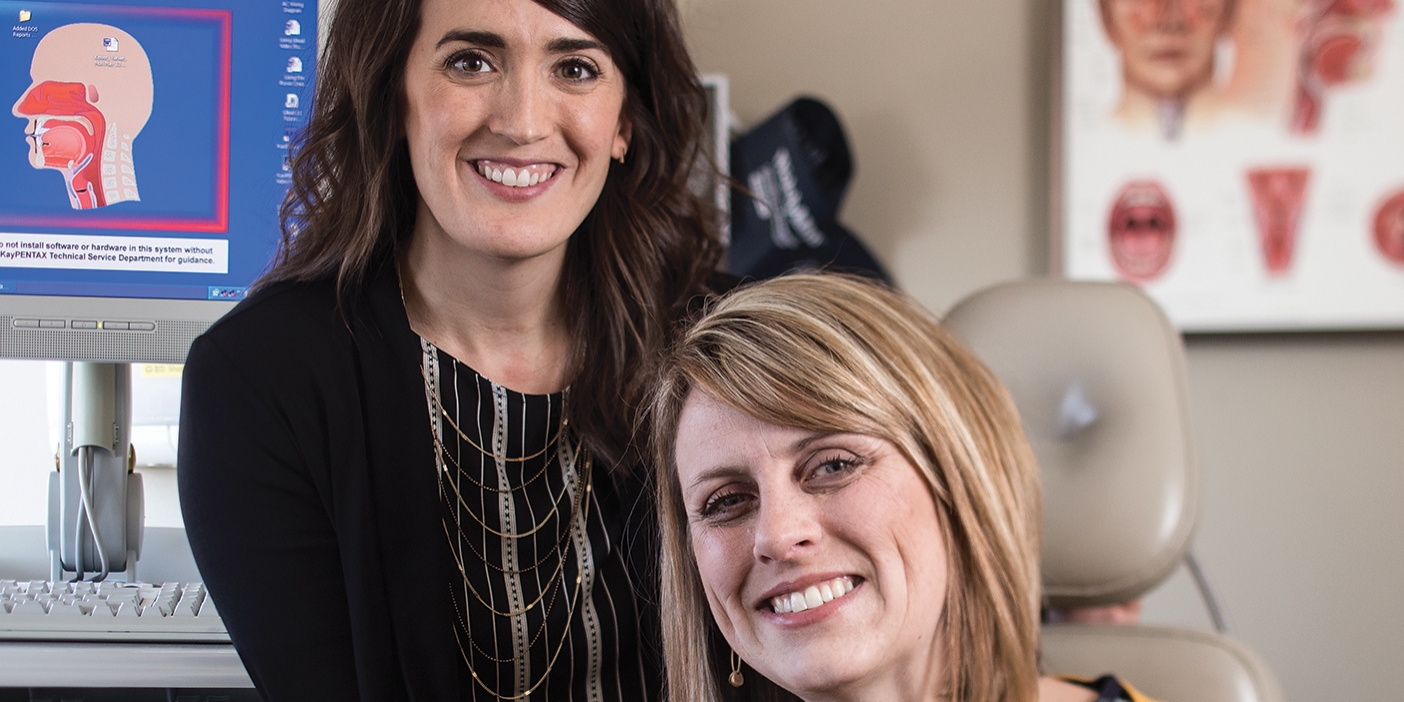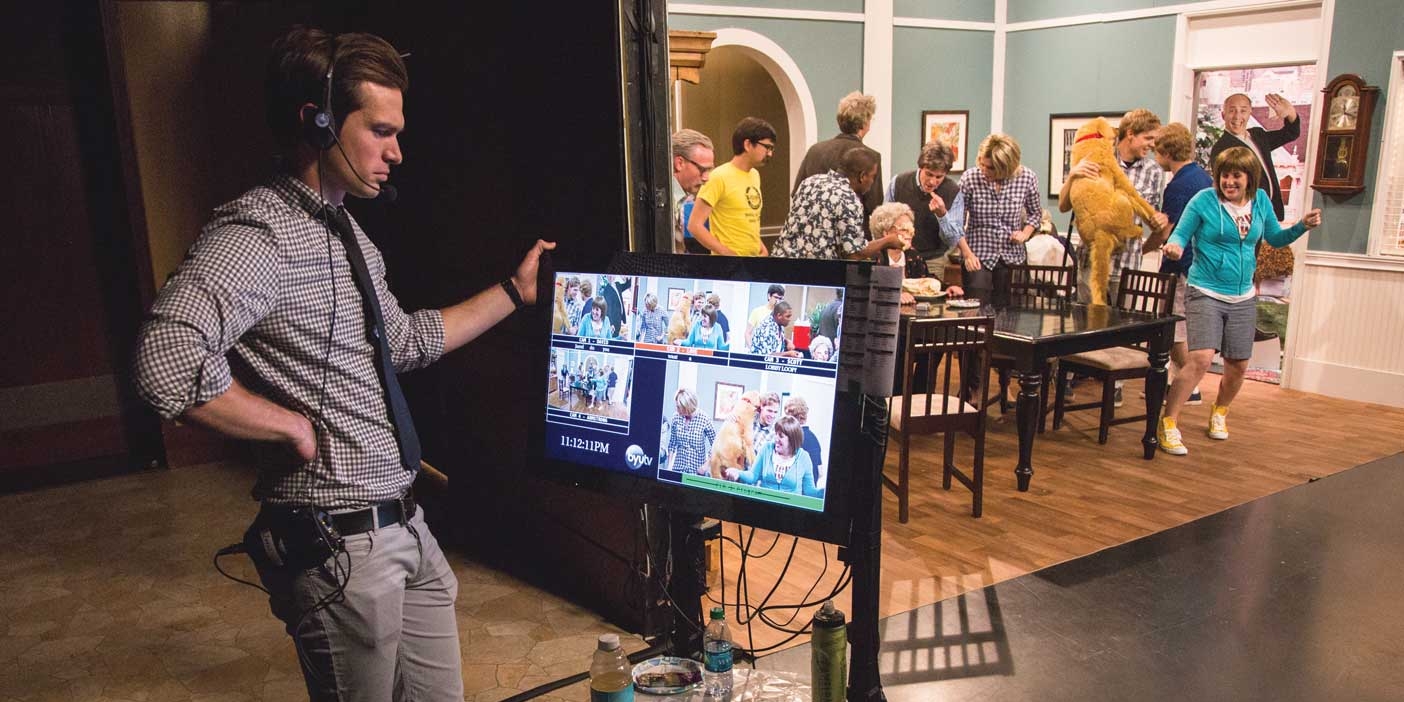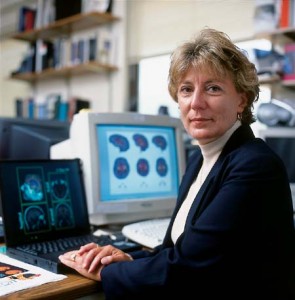
After her son suffered brain damage from oxygen deprivation, Ramona Hopkins went back to school to discover the answers doctors could not provide.
By Aimee H. Hansen, ‘02
Psychology
She found 4-year-old Joshua unconscious, pinned under an automatic garage door. Ramona Ovard Hopkins, ’75, and her husband, Scott, freed their son from the weight of the door, only to find that the pressure on his small chest had stopped his breathing and heartbeat. Ramona began CPR while Scott called 911; the paramedics arrived and rushed Joshua to a nearby hospital, where they discovered that he had suffered from a lack of oxygen to his brain, the effects of which were uncertain.
A nurse, wife, and mother of two sons, Hopkins had been content with the direction of her life. She could not have anticipated the dramatic changes that her son’s accident would lead her to make.
Joshua was fully or semi-comatose for approximately five months. In the months and years that followed, Hopkins and her husband struggled to understand their son’s condition. The damage to Joshua’s motor skills made it difficult for him to do basic things, like walk, talk, and learn to read.
“We would talk to the doctors and ask, ‘What can we expect? Is he going to be able to go to school? What’s going to happen when he gets older?’ They told us they just didn’t know.” Hopkins and her husband searched for answers but soon realized that very little research had been done on the long-term effects of anoxia, a lack of oxygen to the brain, or hypoxia, a decrease of oxygen to the brain.
Rather than remain helpless and frustrated, Hopkins decided to find the answers herself. “I felt strongly that I needed to go to school and do this research,” she says. “At first my son was too sick and needed too much attention, but by the time he was in third grade, I was able to go back to graduate school. I got my degree from the University of Utah in cognitive neuroscience psychology, and I’ve been doing research on anoxia and the brain ever since.”
Hopkins, an assistant professor of psychology and neuroscience at BYU since 1999, has immersed herself in research, focusing on a multitude of disorders that disrupt blood flow or oxygen delivery—such as carbon monoxide (CO) poisoning, acute respiratory distress syndrome (ARDS), and cardiac disease—and their consequences. Along with conducting and publishing research in this little-understood field, Hopkins has dedicated herself to teaching and mentoring, conducting work in a brain-imaging lab, and testing and helping patients at LDS Hospital.
Looking into the Brain
“Any kind of illness or disorder that disrupts oxygen to the brain cells or the blood, which carries oxygen and glucose to the brain, can cause cells to die,” Hopkins explains. Temporary lack of oxygen to the brain can lead to the loss of critical functions and abilities and even death. Anoxia commonly damages parts of the brain that control fine motor skills, intelligence, memory, and problem-solving and decision-making abilities. Although the physical damage is irreparable, some skills can be regained through years of physical, occupational, speech, and cognitive therapy. Hopkins hopes to learn enough about the brain and anoxia’s effects to be able to improve the rehabilitation process for survivors and to help them understand anoxia and its outcome on the mind and body.
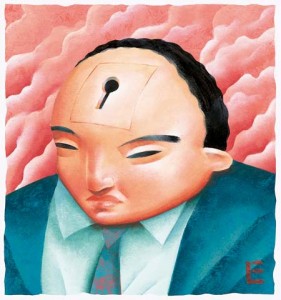
“If we are ever going to understand hypoxia and develop effective rehabilitation techniques, it will be through work like that of Dr. Hopkins.” – Catherine Myers
Some of Hopkins’ most exciting work is done at BYU in the Brain Imaging and Behavior Lab, where Hopkins takes images from MRI scans to determine which parts of the brain have been injured by anoxia. After testing brain-injury patients for cognitive function, Hopkins compares their test scores to their MRI images to reveal relationships between cognitive damage and the visible changes in the brain.
Hopkins’ numerous publications illustrate the wide spectrum of her research. Her recent articles are on traumatic brain injury and memory, neuro-psychological impairments following CO poisoning, and the impaired health status of survivors of severe ARDS, as well as dozens of other topics.
“Hopkins is at the forefront of research into hypoxic brain injury,” says Catherine E. Myers, a psychology professor at Rutgers University. “If we are ever going to understand hypoxia and develop effective rehabilitation techniques, it will be through work like that of Dr. Hopkins, which spans everything from neurons to higher brain function.”
Her devotion to and expertise in her field have taken Hopkins places and put her in situations she never could have anticipated. In 2001 she was invited to an international meeting in Brussels, where she was one of 25 respected brain researchers who met at a roundtable and discussed outcomes of ARDS. This year Hopkins participated in a conference that was designed to educate survivors ofARDS about the illness and its outcome, as well as to help them see that they are not alone in their struggles.
Teaching and mentoring are also important aspects of Hopkins’ work. David F. Tate, ’94, a graduate student who worked with Hopkins in the brain-imaging lab, says of his mentor, “Dr. Hopkins has high expectations and provides great opportunities for students to work, contribute, and get recognized. She involves students in just about every process, from grant writing all the way to the published article.” Hopkins says she tries to prepare students to be at the helm of future brain research and findings. “My hope is to get students interested in the brain, whether or not they study anoxia like I do,” she explains. “I want them to realize that there are a lot of opportunities out there and a lot of things that we still don’t know.”
“They Know I Know”
Hopkins divides her workweek between BYU and LDS Hospital, where she meets with patients who have suffered from lack of oxygen. Hopkins says her background helps patients feel comfortable with her. “I have patients willingly coming to be tested, even when the tests are going to show that they’re having problems with things like memory and problem solving, because they know I know what it’s like. I personally haven’t gone through it, but I’ve raised a son who has had these problems.”
Understanding the personal, emotional effects that anoxia can have on individuals and their families is a promising area of Hopkins’ research. She questions many patients about their perceived quality of life before and after their illness in hopes of discovering ways to combat their frustrations and answer their questions.
“It’s important to recognize that these illnesses cause permanent problems—either cognitively or physically—for people, and this is going to impact their families,” Hopkins says. “This is one of the big directions we’re going now—we’re looking closely at relationships and how these illnesses and disorders affect lives.
“If I had to choose the most satisfying aspect of my work it would be working with the individuals we see in our studies and providing them with what little information we have,” Hopkins says. “For most people, we’re not able to change the consequences, but just helping them know that they’re normal and that they’re not going crazy is very important. We’re giving these people hope that as we learn more—even if we can’t change the outcome for them—we’ll be able to help someone else in the future.”
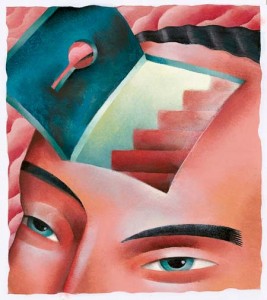
Even if it doesn’t change the outcome, information helps you prepare and come up with appropriate strategies. -Ramona Hopkins
More than 20 years have passed since Joshua’s accident. Today he communicates effectively, walks, goes to school, works, and loves to travel with his family. He served a Church mission in Portland, Ore. His recovery has been a long road, full of questions and surprises.
“When my son had his accident, I felt lost because I didn’t know what to expect,” says Hopkins. “Even if it doesn’t change the outcome, information helps you prepare and come up with appropriate strategies. Right now we’re still at the information-gathering stage in much of this research, but I hope we get to where we can provide information and do things that will really improve outcomes for patients and their families.”
CARBON MONOXIDE: A PREVENTABLE POISON
By Aimee H. Hansen, ‘02
Carbon monoxide (CO) poisoning, one of the perpetrators of lack of oxygen to the brain, is a pressing issue for Ramona Ovard Hopkins, ’75. Once inhaled, this odorless, tasteless, invisible gas can damage the brain or kill its victims. Because the body cannot detect CO through the natural senses, people don’t know they’re getting poisoned until they get sick. “It’s frightening,” says Hopkins, an assistant professor of psychology and neuroscience at BYU, “but the good news is it’s preventable.”
Hopkins explains that there are CO detectors that cost between $30 and $50 available at retail stores. “CO can cause devastating problems to individuals and families,” she says. “It’s frustrating that so many people don’t have a detector at home. CO poisoning is something that can and should be prevented.”
To illustrate the seriousness of this issue, Hopkins relates the story of a family of four in the Provo area who recently suffered from CO poisoning. They had a new furnace put in their home, but it was installed incorrectly. The poison permeated the house, and the entire family was found unconscious. They were admitted to local hospitals, and the family accumulated hundreds of thousands of dollars in medical bills before they could return home. “Even though this family has had a good recovery, they have had to spend a great deal of money and had medical problems that could have been prevented by just spending $50 on a CO detector,” Hopkins points out.
Hopkins and her colleagues are involved in CO education, spreading a message of prevention and precaution and helping people understand that CO poisoning can be a risk almost anywhere. Homes, garages, schools, office buildings, even boats and houseboats can become deadly places if CO is in the environment.
“I would like to never see another person who has CO poisoning,” Hopkins says. “I don’t think it’s likely, but it is possible. We just need to convince people that CO is a real problem, that it can damage the heart and brain, and that everyone needs to protect themselves with a detector.”







